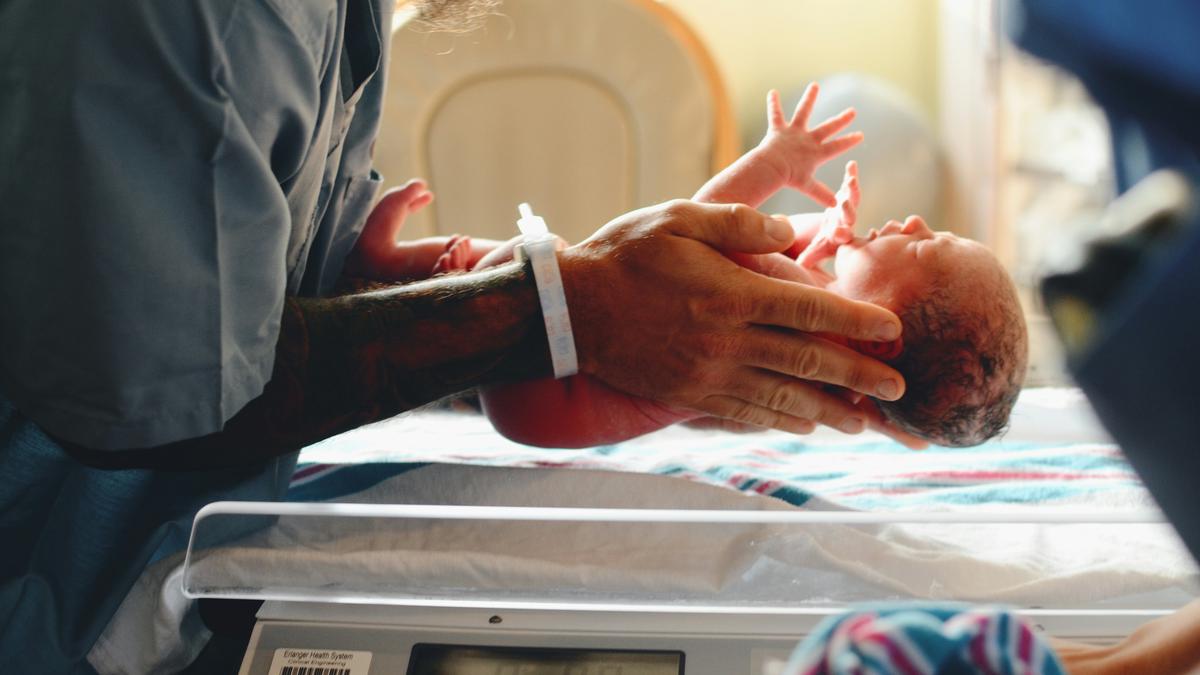Researchers from the Institute of Mathematical Sciences (IMSc) and Seethapathy Clinic and Hospital, both in Chennai, and the Indian Institute of Science Education and Research (IISER), Pune, have developed a model that can predict a newborn’s birth weight using routine scans during pregnancy.
Accurate information about birth weight is crucial for maternal and foetal health. Low weight can cause complications like preterm birth while heavier babies are harder to deliver safely. Knowing foetal birth weight can help healthcare providers identify possible risks and plan interventions.
How much a foetus weighs
There is no method to determine foetal weight during a pregnancy, so doctors assess a baby’s growth by measuring parameters like head and abdominal circumference during routine ultrasounds. Some mathematical formulae allow birth weight predictions based on these measurements, but they require late-term ultrasounds, within a week before delivery.
“Often within the public sector, this last scan close to the delivery does not happen,” said Uma Ram, a gynaecologist at Seethapathy Clinic and Hospital, Chennai. When computational biologists Leelavati Narlikar from IISER and Rahul Siddharthan from IMSc approached Ram with a grant for maternal and child health-related work, they decided to pursue this problem.
Their method was reported in the journal European Journal of Obstetrics & Gynecology and Reproductive Biology: X on October 3. It uses a mathematical model to calculate foetal growth parameters, allowing doctors to estimate birth weight without late-term ultrasounds.
The Gompertz model
“This is a very interesting and important study,” said Tavpritesh Sethi, a computational biologist attheIndraprastha Institute of Information Technology, Delhi; he wasn’t associated with the study. “If the model is validated across bigger settings, it essentially reduces the need for carrying out a lot of ultrasounds.”
The team’s investigation of a mathematical model for growth led them to the Gompertz formula. First described in the 19th century by English mathematician Benjamin Gompertz, the equation has been used to model cell population and tumour growth in biology research. Researchers have also used it to model foetal growth volume in collective data but not to measure individual birth weight.
The Gompertz model, which uses the formula, was originally developed to predict population growth in a constrained setting, Siddharthan said. The team tested it to predict foetal measurements since the uterus is a constrained environment and the formula estimates the right shape of growth, he added.
The team used measurements of foetal parameters like head and abdominal circumference from at least three routine scans of more than 750 pregnant women. They incorporated these data into the Gompertz formula to estimate foetal measurements at the time of birth.
Many women, many formulae
Next, “we tried to predict the birth weight of the baby at the time of delivery,” the study’s first author Chandrani Kumari said.
They used the actual and predicted foetal measurements to train a machine-learning model to predict birth weight.
To challenge their model, the researchers compared expected weights with birth weights reported in the records. They observed that their model predicted more than 70% of birth weights with an error margin of less than 10%.
Researchers from other countries have provided several other formulae to predict foetal weight at birth and during pregnancy based on ultrasound measurements. Despite not having late-term ultrasound measurements, the current model was comparable to these previously described models, indicating this method outperforms older ones.
Next step: the clinic
The researchers next used their model to predict birth weights in a different group of 365 women. They obtained foetal measurements for this group from hospitals in Chennai, Pondicherry, Hyderabad, and Kochi. And again, they observed that recorded birth weights in this group were comparable to expected birth weights predicted by their model.
Equipped with a model to accurately predict birth weight, the team now looks forward to applying it in the clinic. The researchers have published the code for their prediction software online and plan to make an easy (and free) online calculator for clinicians.
Ultrasound machines also have software equipped with growth charts and formulae for doctors to estimate a foetus’s weight. “In similar fashion, this formula could also be incorporated into that software,” Ram said.
Gaps in the machine
But the study is not without limitations, according to Sethi and the researchers. The model still needs to incorporate the nutritional status of pregnant women, which may affect foetal growth, Sethi said. He also said the model must be validated in other populations across India, where the relationship between, say, a foetus’s physical dimensions and weight might be different.
The researchers agreed testing the model with a more diverse cohort is important. Both groups they tested the model with were from South India. But change may be underway: the researchers are in the early stages of considering requests from independent researchers for access to their model.
Need for data
Narlikar added they also need to check whether the model works with geographically and ethnically diverse populations, but there is limited data to test the model on.
“One thing the community is lacking is … that we don’t have a lot of publicly available datasets,” she said. “It would be a great thing if we had more of them.”
Indeed, Narlikar and Siddharthan — both bioinformaticians — noted the lack of data-sharing in healthcare, in part to maintain patient confidentiality. “We have done our best to anonymise the data and give only the basic information so that patients cannot be identified,” Siddharthan said.
“We have made our data available. We very much hope that other groups will do the same thing.”
Sneha Khedkar is a biologist turned freelance science journalist.
Published – November 04, 2024 05:30 am IST








![Best Weight Loss Supplements [2022-23] New Reports!](https://technologytangle.com/wp-content/uploads/2022/12/p1-1170962-1670840878.png)




